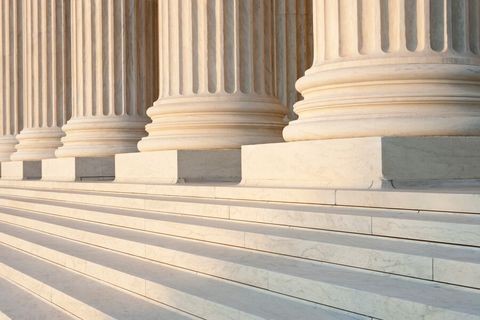Sufficiently Pleaded Willful Infringement Claim and Inappropriate Royalty Base Calculation Result In Partial Reversal
Client Alert | 1 min read | 09.07.07
In Mitutoyo, Corp. et al. v. Central Purchasing, LLC (No. 06-1312, 1343, September 5, 2007) a Federal Circuit panel reverses-in-part a district court’s judgment dismissing the plaintiff’s claim of willful infringement and for including a second company’s sales figures in calculating the royalty base.
On appeal, the plaintiff is deemed to have sufficiently pleaded the willful infringement claim under its patent infringement count and because it had additionally provided details about the declaratory judgment suit filed by the defendant in 1995, thereby establishing that defendant had knowledge of the patent prior to 2002. Nothing in the plaintiff’s litigation conduct, notes the panel, evidenced an intent by plaintiff not to pursue its willful infringement claim; plaintiff had apprised the Court throughout the entire course of the litigation of its willful infringement claim and requested a trial on the issue.
With respect to the reasonable royalty calculation, the district court utilized both defendant’s and a second company’s sales of the accused products in calculating the royalty base. The Federal Circuit reverses as to the district court’s use of a royalty base that includes the second company’s sales figures, rather then defendant’s sales to that company. The panel notes that the two companies have a strong business relationship; however, they are independent corporate entities with different owners. No corporate relationship is found to exist between the second company and defendant, and there was no course of dealings or other evidence to suggest that defendant would have agreed to pay royalties on both company’s sales.
Insights
Client Alert | 2 min read | 11.14.25
Claim construction is a key stage of most patent litigations, where the court must decide the meaning of any disputed terms in the patent claims. Generally, claim terms are given their plain and ordinary meaning except under two circumstances: (1) when the patentee acts as its own lexicographer and sets out a definition for the term; and (2) when the patentee disavows the full scope of the term either in the specification or during prosecution. Thorner v. Sony Comput. Ent. Am. LLC, 669 F.3d 1362, 1365 (Fed. Cir. 2012). The Federal Circuit’s recent decision in Aortic Innovations LLC v. Edwards Lifesciences Corp. highlights that patentees can act as their own lexicographers through consistent, interchangeable usage of terms across the specification, effectively defining terms by implication.
Client Alert | 6 min read | 11.14.25
Microplastics Update: Regulatory and Litigation Developments in 2025
Client Alert | 6 min read | 11.13.25


